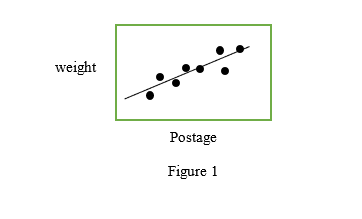The US will stay in the Universal Postal Union (UPU), a decision that likely caused mailers everywhere to breathe a sigh of relief at the avoidance of a major disruption in the USPS’ international mail services during peak season. This is very good news for commercial and institutional mailers, for US residents, for US citizens outside the country, and for the USPS. The concerns regarding voting by US civilian and military citizens overseas and for mail to members of the military who are serving outside the US are now resolved.
Between the postage increases in January 2020 and ones that will take effect in July 2020, postage rates for international small packages from the US to other countries will increase more than they have in the past due to the agreement reached among the member countries at the UPU Extraordinary Congress in September. And we may see higher postage increases for international packages in the future, since they will be considered competitive products as of July.
After the Extraordinary Congress rejected the proposed option preferred by the US on September 24, with 78 countries voting against, 57 in favor, and nine countries abstaining, an agreement dubbed “Option V” (for Victory) was passed by acclimation on September 25 on remuneration for bulky letters and small packets. It met the US requirements for remaining in the UPU, according to Dr. Peter Navarro, Assistant to the President and the Director of the Office of Trade and Manufacturing Policy (OTMP), who led the US delegation to the Extraordinary Congress. The US formally removed its notice to withdraw at a White House meeting between President Trump and UPU Director-General Bishar Hussein.
According to those attending the Congress, negotiations to reach the compromise lasted until 3 a.m. and picked up again early on the 25th. Late in the afternoon in Geneva, Option V was passed by acclamation. This agreement will be in effect through 2025 unless it is amended by a UPU Congress. (There will be Congresses in September, 2020 and in 2024.) The agreement allows self-declared rates (rates set by the destination country) for bulky letters and small packages. Since any items containing goods must be mailed as a package under the USPS rules, this agreement affects any mail with goods and those in the defined size.
Who and What Is Affected?
The UPU defines small packages and bulky letters as class E letter-mail (E stands for encombrant, French for cumbersome.) Class E items are defined as larger in any dimension than 305mm X 381mm X 20mm and weighing between 500 grams and two kilograms, or approximately 12” X 15” X 0.8” and weighing between 1.1 and 4.4 pounds. So, a package that is 6” X 4” X 2” weighing three ounces is covered by this agreement because it is more the 0.8” in height. Regular letters and flats are not affected, nor is Parcel Post, which weighs over two kilograms or 4.4 pounds in the UPU definition.
The inbound rates paid by countries to each other are not postage rates. The rates countries pay are established under the UPU agreements and are paid in Special Drawing Rights (SDRs) that can be converted into national currencies. Postage rates are what mailers pay. For international mail, a portion of the postage rate covers what the originating country pays to the mail-destination country. Self-declared inbound rates are payments exchanged between countries, rather than postage paid by mailers to a postal operator.
The formula for determining the maximum for self-declared rates for each country is complex. It is based on a linear regression line using 11 weight points from 20 grams (0.705 ounces) to 2,0000 grams (4.4 pounds) and 70% of that country’s single piece rate for those points. A linear regression line, also known as a best-fit line or least-squares regression line, is a calculation that produces a straight line that is statistically closest to each point on a graph. See Figure 1 for an example.

There are caps to the inbound rates, expressed in SDRs. The agreement lays out increasing caps for each year from 15% to 17% over the previous year through 2025. A procedure for allowing exceptions for any country where the rate determined within this methodology does not meet its costs are laid out and can allow a self-declared rate of up to 80% of the single piece domestic postage for an equivalent item.
The USPS, or any other country that “received total annual inbound letter-post volumes in 2018 in excess of 75,000 tonnes”, will be able to institute self-declared rates for inbound international small packages at the beginning of July of this year, although doing so will invoke payments to the UPU of CHF 40 million ($40.31 million in US currency) over a five-year period. Only the US meets this requirement. About 45 developed countries exchanging packages with the US may respond with their own self-declared rates for inbound items from the US. As the USPS estimates it loses about $400 million annually on these packages, the agreement makes financial sense.
More Changes Coming Next Year
In January 2021, the system of self-declared rates is available to all countries. All UPU-designated target system countries with higher volumes, which are generally more developed countries, are required to self-declare rates. Right now, that includes 47 countries. Exemptions to the system of self-declared rates are available to UPU-designated transitional system countries and those with low international mail volumes, but they may choose to enter into self-declaring rates. The UPU-designated transitional system countries number 105 out of their membership of 192 countries. (This number should decrease as countries develop better postal infrastructure and services.)
The self-declared inbound rates will be determined by each participating country under whatever legal and regulatory regime applies in that country. Once these rates between postal operators are established, each country can calculate their outbound costs to that other country. This is when postage prices applicable to outbound items can be established, subject to the regulatory and legal framework. It may be a lengthy process, but this all applies only to small packages and bulky letters, not to regular letters, flats, or parcel post.
Here in the US, the Postal Regulatory Commission (PRC) is the regulatory authority that will review and approve the rates submitted by the USPS, calculated as agreed among the UPU members. The USPS and other countries must notify the UPU in March of their self-declared rate, with each country having a different inbound rate. The USPS has made it clear that there will be a postage increase for small packages in July.
The January postage rates are public, with increases for international packages from about six percent to 10% depending on package weight and destination country (in addition to the aforementioned July increase). These increases for small package postage might be as high or higher than those that went into effect this January, so it is important for mailers and shippers to start preparing as soon as possible.
Merry Law is President of WorldVu LLC and the editor of Guide to Worldwide Postal-Code and Address Formats. She is a member of the UPU’s Addressing Work Group and of the U.S. International Postal and Delivery Services Federal Advisory Committee.
This article originally appeared in the January/February, 2020 issue of our sister publication, Mailing Systems Technology.



















